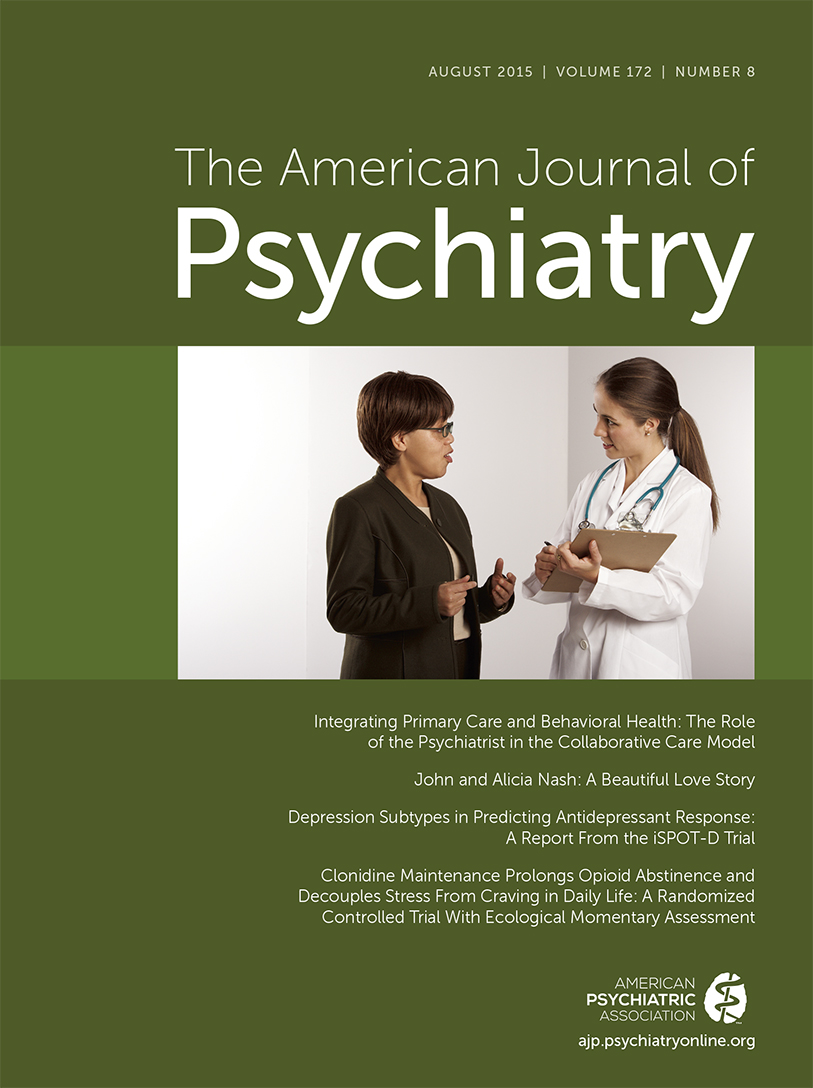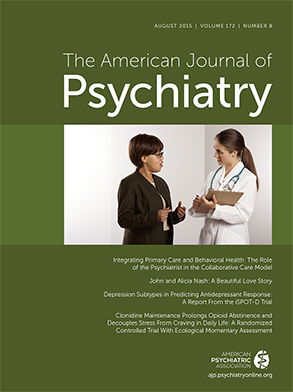Relapse is one of the greatest challenges facing drug abusers and their caretakers. Many addicts can successfully achieve initial abstinence through a variety of sticks and carrots, medications and incarcerations. However, upon return to their usual environment, users are very likely to relapse to old drug habits, even long after the effects of acute withdrawal are gone. Why people return to drug use, despite the known adverse consequences, is not understood. Because relapse occurs in an uncontrolled environment, and at unpredictable times, it is extremely difficult to study. In their article in this issue, Kowalczyk and colleagues (
1) present promising new data supporting the idea that stress induces relapse, and that reducing the stress response with medication can reduce lapses to drug use. Perhaps more importantly, their study describes new research approaches that can be used to understand the processes involved in, and treatments to reduce, relapse to drug use, within the natural drug-taking environment.
Acute stress is thought to be a key cause of relapse to drug use (
2). This idea is supported not only by clinical reports but also by extensive research in animal models of drug relapse, which also examine the neural mechanisms underlying the return to drug seeking (
3). Indeed, these animal studies suggest that alpha-2 adrenoceptor agonists specifically reduce stress-induced relapse, compared with relapse induced by other factors, such as cues or small amounts of the drug.
In the Kowalczyk et al. study, the authors examined the effects of clonidine, an alpha noradrenergic agonist, on stress-induced relapse. Clonidine is commonly used during detoxification, but how and why it alters drug-seeking behavior is not known. Opioid-dependent patients who had already demonstrated a successful response to buprenorphine treatment (i.e., 5–6 weeks of abstinence) were randomly assigned to continuing 14 weeks of buprenorphine maintenance treatment either with or without adjunctive clonidine. The investigators monitored the participants’ drug use, and also obtained repeated daily reports (four times a day, at random) of participants’ mood and craving. Clonidine extended the duration of abstinence, compared with placebo, although both groups ultimately showed similar rates of relapse. The most intriguing aspect of the study was that the investigators studied the temporal relationship between drug use and daily reports of stress, mood, and craving by providing participants with handheld electronic devices. This innovative data collection strategy allowed the investigators to conclude that clonidine reduced the temporal association between stress and craving for opioids, supporting the idea that the drug exerted its therapeutic effect by dampening stress.
Despite an enormous scientific literature derived from controlled studies of drugs of abuse, our understanding of the natural ecology of drug use, outside of the laboratory setting, is very limited. For example, we have limited knowledge of the patterns of drug use that lead to dependence, or of the environmental or psychological factors that influence specific occasions of drug use, including during periods of attempted abstinence. This lack of knowledge of the natural course of drug use constitutes an enormous gap in our understanding of the determinants of addiction. The gap can be addressed using innovative techniques such as that used in the study by Kowalczyk and colleagues. Ecological momentary assessment, or the collection of psychological and behavioral data using electronic devices in real time, in the natural environment, was pioneered by Shiffman and colleagues (
4). This technology now allows researchers to monitor the patterns and the contexts in which people use drugs. It allows investigators to determine the temporal relationships between events (e.g., mood states, stress) and stimuli (e.g., reminders of drug use) that are thought to induce drug taking, and between events and stimuli and drug use itself. In the present study, Kowalczyk et al. used this technology to support their hypothesis that clonidine improves treatment outcome by reducing the link between acute stress and drug use. This technique has enormous potential to improve our understanding of the processes of onset, maintenance, and relapse to drug use and the effectiveness of potential treatments.
In future research, a similar approach could be taken to study precipitants of relapse other than stress, or to study other problematic behaviors, such as gambling. It would be possible to study the role of drug-related cues (possibly even by adding a visual component to the monitoring) or to study how small (“priming”) doses of an abused drug increase the likelihood of further use. It is possible to study the specificity of these relations to a particular drug type, as Kowalczyk et al. did in the present study (cocaine or marijuana). Most importantly, it would be valuable to understand how exactly potential treatments alter behavior to reduce the likelihood of drug use or other problem behaviors.
The study by Kowalczyk et al. is an exemplary instance of rigorous data collection techniques applied in a natural setting to maximize ecological validity and advance our understanding of the pervasive and costly problems of addiction.

